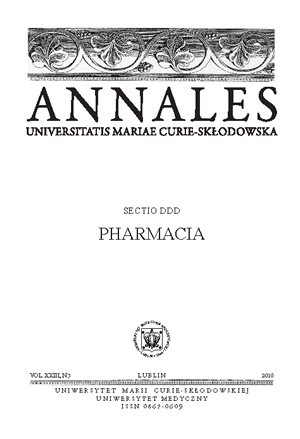Blockade of the endoplasmic reticulum stress sensor inositol requiring enzyme-1 changes the expression of cyclin and growth arrest-specific genes in glioma cells
Keywords:
inositol requiring enzyme-1, gene expression, cyclin A2, D3, E2 and G2, cyclin-dependent kinase CDK4, growth arrest-specific genes GAS1 and GAS6, glioma cellsAbstract
We studied effect of inositol requiring enzyme-1 (IRE-1) deficiency on the expression of different cyclin and cyclin-dependent kinase (CDK) genes as well as growth arrest-specific (GAS) genes in glioma cells and modified glioma cells without IRE-1 kinase and ribonuclease activities. Cyclin A2, D3, E2 and G2 mRNA expression was significantly increased in IRE-1-deficient glioma cells as compared to control cell line. Blockade of IRE-1 activities significantly induced the expression of growth arrest-specific genes GAS1 and GAS6. Results of these investigations clearly demonstrated that the expression of growth arrest-specific genes and different cyclins in glioma cells significantly depends on IRE-1 kinase and ribonuclease activities.
References
1. Acosta-Alvear D. et al.: XBP1 controls diverse cell type- and condition-specific transcriptional regulatory networks. Mol. Cell, 27, 53, 2007.
2. Aragón T. et al.: Messenger RNA targeting to endoplasmic reticulum stress signalling sites. Nature, 457, 736, 2009.
3. Bi M. et al.: ER stress-regulated translation increases tolerance to extreme hypoxia and promotes tumor growth. EMBO J., 24, 3470, 2005.
4. Blais J.D. et al.: Transcription factor 4 is translationally regulated by hypoxic stress. Mol. Cell. Biol., 24, 7469, 2004.
5. Denko N.C.: Hypoxia, HIF1 and glucose metabolism in the solid tumour. Nature Rev. Cancer, 8, 705, 2008.
6. Drogat B. et al.: IRE1 signaling is essential for ischemia-induced vascular endothelial growth factor-A expression and contributes to angiogenesis and tumor growth in vivo. Cancer Res., 67, 6700, 2007.
7. Fels D.R., Koumenis C.: The PERK/eIF2a/ATF4 module of the UPR in hypoxia resistance and tumor growth. Cancer Biol. Ther., 5, 723, 2006.
8. Guan D. et al.: N-acetyl cysteine and penicillamine induce apoptosis via the ER stress response-signaling pathway. Mol. Carcinogen, 49, 68, 2010.
9. Han D. et al.: A kinase inhibitor activates the IRE1alpha RNase to confer cytoprotection against ER stress. Biochem. Biophys. Res. Commun., 365, 777, 2008.
10. Hollien J. et al.: Regulated Ire1-dependent decay of messenger RNAs in mammalian cells, J. Cell. Biol., 186, 323, 2009.
11. Korennykh A.V. et al.: The unfolded protein response signals through high-order assembly of Ire1. Nature, 457, 687, 2009.
12. Lin J.H. et al.: IRE1 signaling affects cell fate during the unfolded protein response. Science, 318, 944, 2007.
13. Minchenko O.H. et al.: Splice isoform of 6-phosphofructo-2-kinase/fructose-2,6-bisphosphatase-4: expression and hypoxic regulation. Mol. Cell. Biochem., 280, 227, 2005.
14. Moenner M. et al.: Integrated endoplasmic reticulum stress responses in cancer. Cancer Res., 67, 10631, 2007.
15. Romero-Ramirez L. et al.: XBP1 is essential for survival under hypoxic conditions and is required for tumor growth. Cancer Res., 64, 5943, 2004.
Downloads
Published
Issue
Section
License
Copyright (c) 2010 Authors

This work is licensed under a Creative Commons Attribution-NonCommercial-NoDerivatives 3.0 Unported License.


